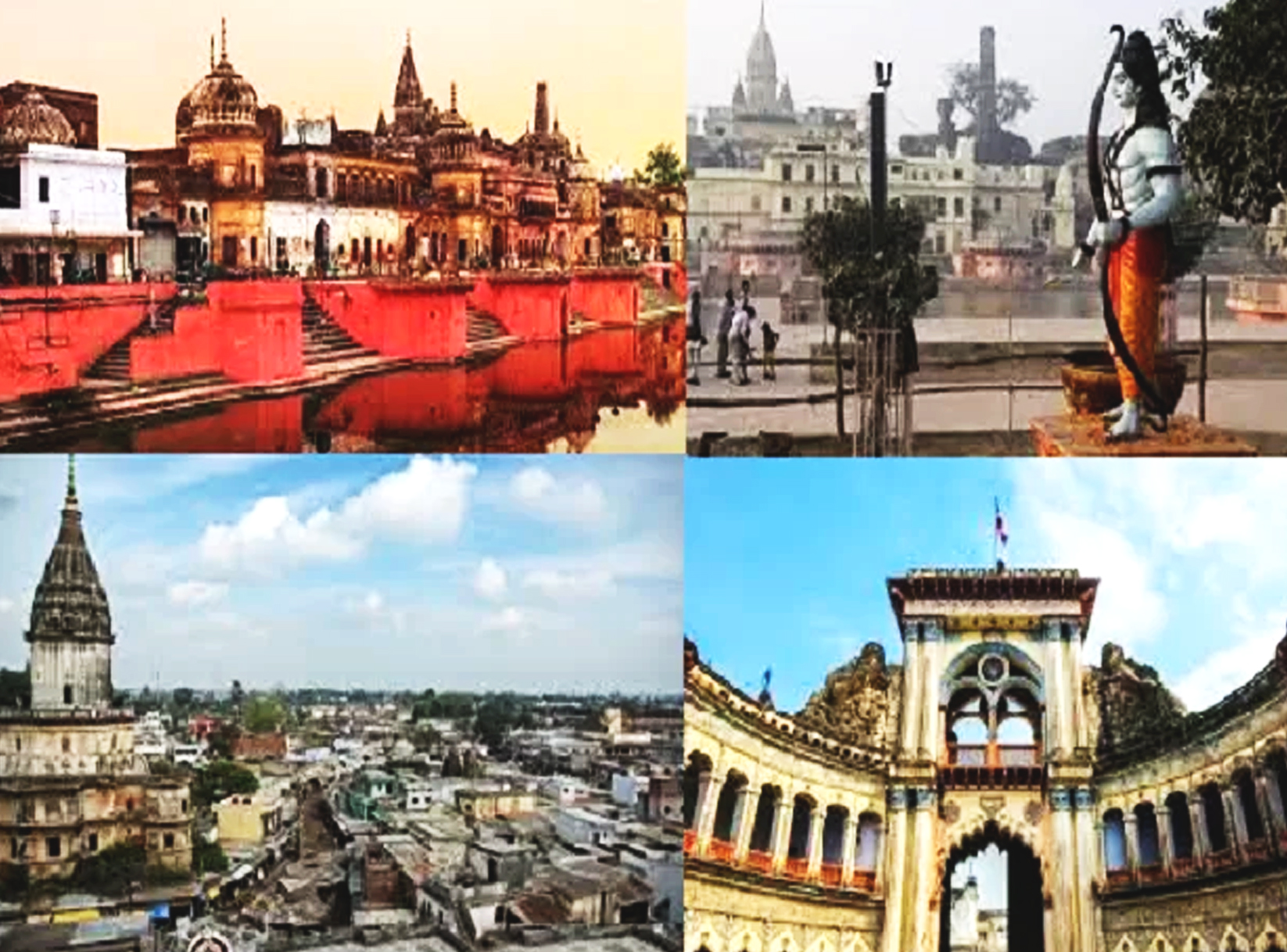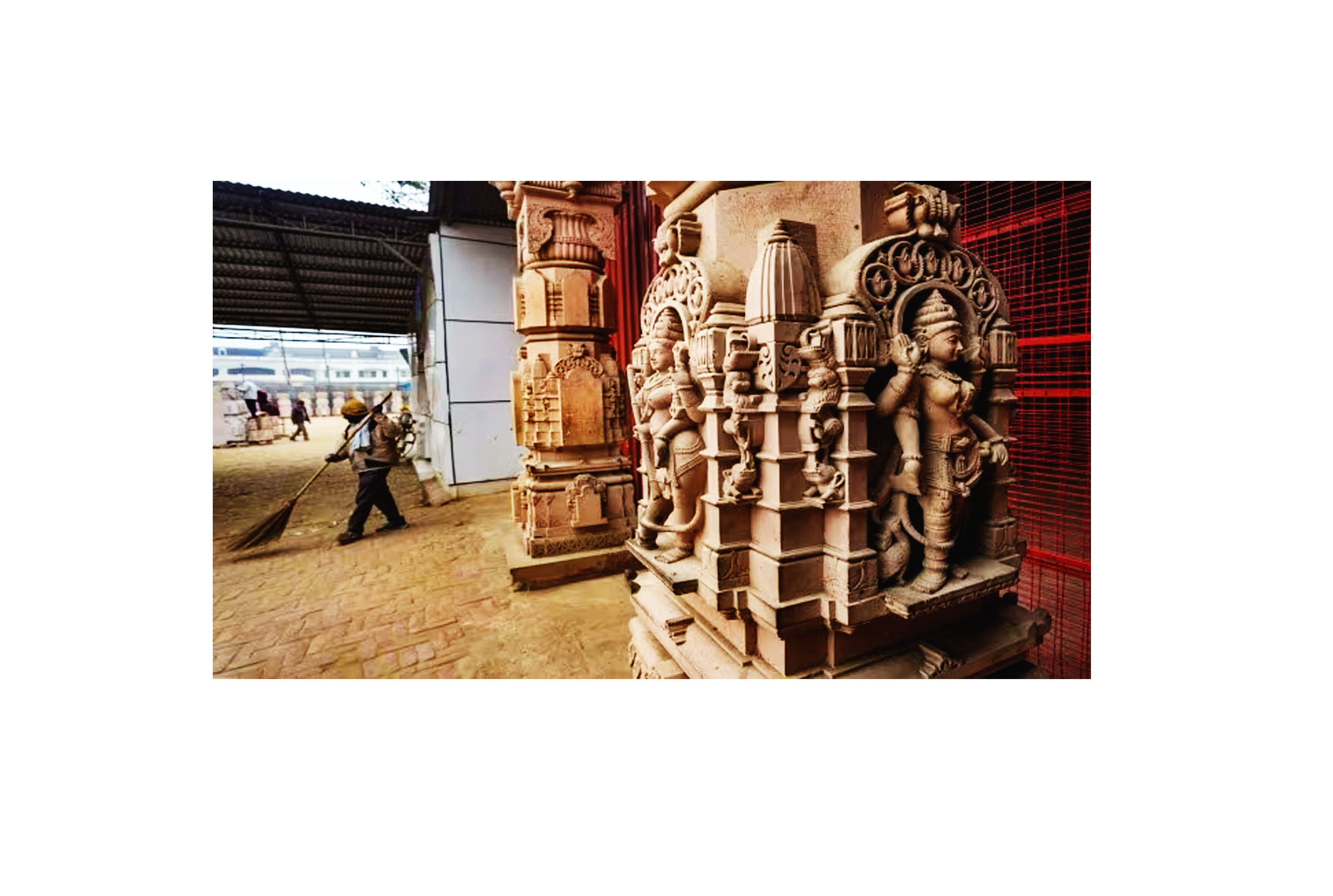Ayodhya’s Cultural Resurgence: A Global Symphony of Reclamation
reconstruction of the Shri Ram temple in Ayodhya has been profound, leading to a transformative era for Bharat (India). The culmination of a long-standing dispute over the sacred land has not only ushered in a physical transformation but also triggered a broader movement towards the rejuvenation of cultural and societal values.
The construction of the Shri Ram temple has not only been a religious event but also holds significant socio-economic implications. The Ayodhya region, which was marred by years of contention, witnessed a surge in economic activities post the resolution of the dispute. The construction process itself provided employment opportunities for the local population, contributing to a boost in the regional economy. Additionally, the completion of the temple has attracted pilgrims and tourists, further fostering economic growth in the area. Bharat (India) getting past four trillion-dollar economy, becoming 5th largest economy by nominal GDP and top three economy by PPP, is no coincidence but as a result of continued integral strategic part of this cultural resurgence.
Moreover, the cultural impact of the temple reconstruction extends beyond religious boundaries. The Shri Ram temple serves as a symbol of unity and shared heritage, fostering a sense of cultural pride among the people. The project has sparked a renewed interest in India’s ancient history and cultural traditions, prompting a collective effort to preserve and promote the rich tapestry of Bharatiya Samskriti (Indian culture).
The concept of Vishwa Guru, symbolizing India as a global leader in wisdom and spirituality, has gained prominence with the reconstruction of the Shri Ram temple. The spiritual and cultural resurgence emanating from Ayodhya is envisioned as a catalyst for Bharat (India) to reclaim its position as a guide to the world. This spiritual leadership, rooted in the teachings of Lord Rama, aims to inspire harmony and peace globally.
The realization of the Rama Rajya concept is a central theme in this cultural resurgence. Rama Rajya, as depicted in ancient Hindu scriptures, envisions a society where individuals live in harmony with themselves, with their communities, with other nations, and with nature. This concept emphasizes the importance of moral and ethical values in governance, decision-making, and daily life.
Living by morals, ethics, and principles, as exemplified by Lord Rama, leads to a path of peace, harmony, and integrity. The choices we make and the decisions we take shape the society we live in. The reconstruction of the Shri Ram temple serves as a reminder of the values embedded in the Rama Rajya concept, inspiring individuals to uphold righteousness and justice in their actions.
Lord Rama’s patience during the 14-year exile and his adherence to his father’s words for the sake of principle and justice set a timeless example. The subsequent wait of 700 years for the restoration of his Janmabhoomi showcases resilience and unwavering faith. The peaceful and legal resolution of the Ayodhya dispute, spearheaded by the Sanatana (Hindu) community, stands as an exemplary act of cultural significance globally.
The unique aspect of the Ayodhya movement lies in its predominantly civilian and non-violent nature. Ordinary people, without grand identities or political affiliations, played a pivotal role in this historic event. The peaceful resolution of the Ayodhya dispute not only showcases the resilience of the Sanatana community but also stands as a testament to the power of peaceful advocacy and dialogue in resolving complex societal issues.
This cultural resurgence, ignited by the reconstruction of the Shri Ram temple, extends far beyond the borders of Bharat, reaching towards a global reclamation of sacred spaces. Thousands and millions of temples across the globe, which have suffered the ravages of desecration and terrorism over centuries, are now being symbolically reclaimed, one temple at a time. The spirit of cultural pride and identity, inspired by Ayodhya’s transformation, is set to spread to other revered sites such as Shri Krishna’s birthplace in Mathura and the Kashi Vishwanath temple. This monumental resurgence transcends geographical boundaries, fostering a shared sense of pride and respect for cultural heritage worldwide. It goes beyond the Indian diaspora, resonating with people of diverse backgrounds, encouraging them to embrace and celebrate their respective cultures and lands. The reconstruction of the Shri Ram temple becomes a catalyst for a broader movement towards the preservation and revival of cultural sanctuaries, fostering global understanding and appreciation for the rich tapestry of human heritage.
As Bharat experiences this cultural resurgence, there is a ripple effect that extends beyond its borders. The values embedded in the reconstruction of the Shri Ram temple serve as a beacon of hope and inspiration for people across the globe. The emphasis on moral and ethical living, harmonious coexistence, and respect for nature resonates universally, offering a roadmap for individuals and societies to unlock their true potential.
Shri Ram stands not only as a religious figure but also as a profound cultural identity and civilizational leader of Bharat. His principles, exemplified in the epic Ramayana, serve as a timeless guide, especially in challenging times marked by rising poverty, gender inequality, and the imminent threat of global warming among other common global issues. In the face of such global challenges, the principles of Shri Rama can play a pivotal role in unifying humanity towards achieving common sustainable development goals (SDGs), as outlined by the United Nations. The values of compassion, justice, and environmental stewardship, inherent in Lord Rama’s teachings, resonate as a universal call to action. Embracing these principles can forge a path towards a more sustainable and harmonious world, where the collective efforts of nations align with the broader vision of global well-being. Shri Ram’s legacy, therefore, extends beyond religious boundaries, offering a cultural beacon that illuminates the way toward a more inclusive and sustainable future for humanity.
In essence, the reconstruction of the Shri Ram temple in Ayodhya marks a significant chapter in the cultural resurgence of Bharat. It is not merely a religious event but a transformative journey towards reclaiming ancient wisdom and values that have the potential to guide the world towards peace, harmony, and integrity. Lord Rama’s teachings continue to inspire individuals to lead a life rooted in morals, ethics, and principles, paving the way for a cultural renaissance that transcends borders and uplifts humanity.
-Vinay Karanam, PhD, CEng(I), FINS, MIE, MEngNZ, MPMI
Co-founder and Chief Technology Officer
Matakite Online Trust of New Zealand (Registered Charity: CC60757)
Awardee of “Community based Program of the Year 2022” by ACE Aotearoa



